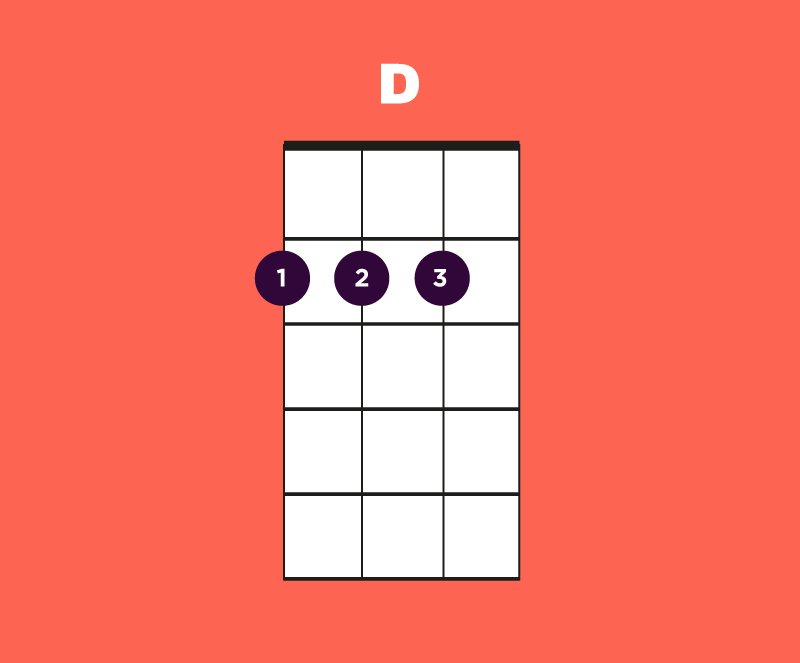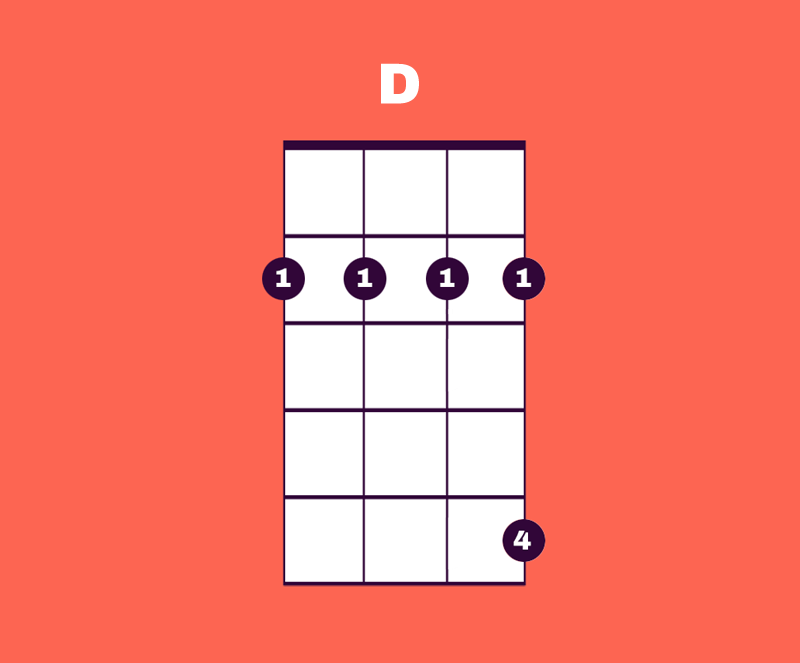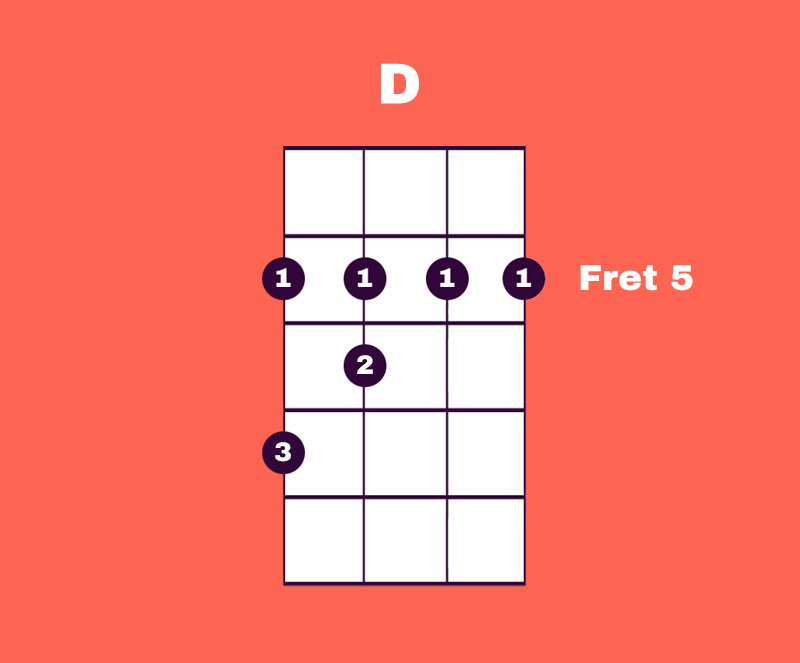Do you want to know how to play a D on ukulele? Excellent, we’ll start with a nice easy D and for those that want a little more we might even learn a little theory too. Let’s get to it.
Open D Chord
A standard open D chord on ukulele involves fretting at fret 2 of the G, C and E strings leaving the A string open. The chord box looks something like this…

Which when strummed sounds like this.
Lovely isn’t it?
When you’re fretting a D chord, do your best to keep your thumb behind the neck of your ukulele rather than creeping over the top of the neck, this will make it far easier for you to get enough pressure to make it ring out.
Also watch out for the open A string, try and make sure that your third finger isn’t blocking that string from sounding out.
When learning any new chord it’s always useful to play each string separately once you’ve got it fretted, this will help you hear any potential dead notes that you haven’t quite fretted properly or where another finger is catching a string.
Alternate Fingering For Open D Chord
It’s very rare that I play a D chord as shown above. More often than not, I change the order of my fingers around so that my second finger is fretting on the second fret of the G string and my index finger is getting the second fret of the C string.

The reason I do this is I find it far easier to transition from this fingering to an A chord and also to a G chord and both of these are very common chords that are never far from a D.
Here’s the chord box for this version.
Your fingers are a little bit more bunched up but I think it’s a more versatile way to play the chord. You should never really think of chords in pure isolation, well unless you’re playing a one chord song.
Notes in a D Chord
Here comes a little theory now, don’t be scared.
Major chords contain just 3 notes. Even though you’re strumming 4 strings, you’re actually playing 3 notes. The notes found in a D chord are D, F# and A.
So when you’re playing the D chord as shown in either chord box above, you’re playing each of those notes but you’re also playing an additional A note. Chords often double up notes so that you can strum all of the strings rather than just three of them.
If you’re interested in chord construction check out my post on major chord construction for more details.
Making The D Chord Easier
This becomes useful if you’re struggling with the D chord. Let’s say that you’re struggling to get all 3 fingers on the frets, well you could simply strum the bottom 3 strings and forget about fretting the top string (G string).
This is still a D chord. It contains all of the notes found in the D chord. We’ve just dropped out one of our two A notes.
This technique works for any major or minor chord. Once you know the notes, you can choose which one to drop out, whether this is for music reasons or just because you’re finding the chord a little difficult.
Not only is this useful to help make chords easier to play, but it’s also useful to know so you can find variations of a chord that still contain the correct notes.
D Chord Inversions
Let’s take a look at one of those variations (or inversions) right now.
To play this inversion we’re going to bar across fret 2 with our first finger and use our pinky finger to get the fifth fret of the A string. The chord box looks like this.

And it sounds like this when strummed.
You should be able to hear a slight difference from our open D chord and that’s because this version is constructed a little differently.
In our open D chord at the top of this page our chord had two A notes in it. One on the G string at fret 2 and another on our open A string.
In this inversion we’re losing the second A note and replacing it with a higher D note. So now the highest note in our chord is D and you can hear that note ring out when we strum the chord.
Horses for courses as they say but sometimes this inversion works a little better than the open chord and vice versa. Let your ears be the judge.
On to another inversion. This time we’re going to be barring across fret 5 and using our second and third fingers to help out.
Take a look at the chord box below. The eagle eyed among you will be thinking ’that looks exactly like an A chord shifted 5 frets up’ and you’d be right.

Again, it will sound a little different because this time we have two high D notes in our chord rather than two Ds an octave apart in the previous inversion.
Getting to know a few inversions for each chord will really help improve you as a player as well as improving your knowledge of musical theory. You’ll be able to choose chords to play that work for the piece of music that you’re playing and you’ll start to understand the makeup of the chords too which is a very useful thing to know.
So that’s the D chord for you. Hopefully you found this useful and maybe even learned a thing or two.
If you have any questions on the D chord please let me know in the comments.




Hi!
I enjoyed reading and learning this article as a newbie player.
Thanks so much!
Because my fingers are so fat, I find the D to be impossible even with the inversions. I find the easier D7 to be a good replacement. What are your thoughts on this cheat??
Generally if it sounds good then go for it – there will be many occasions where you can get away with a D7 in place of a D, there will be times where it wont work though unfortunately.